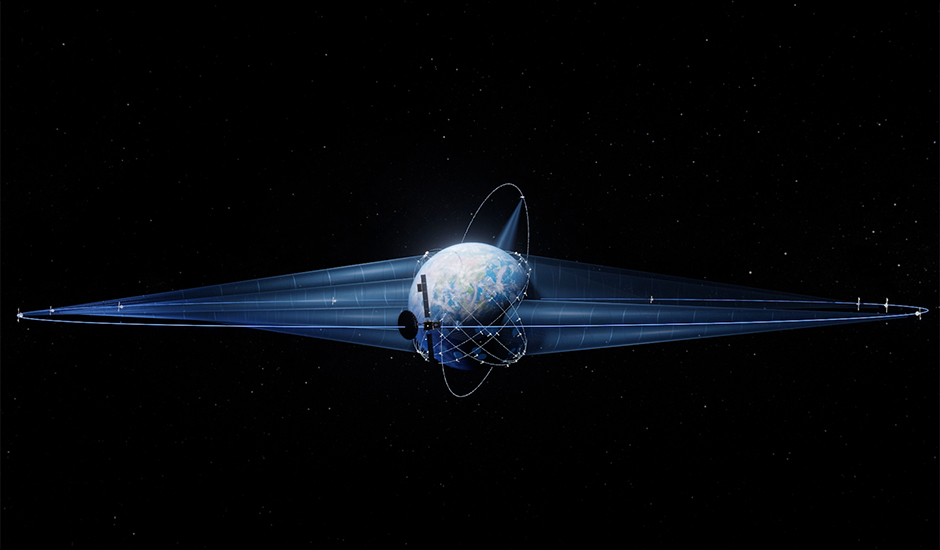Inmarsat Partner Podcast with James Francis –CEO, Micro-Ant, LLC
At the recent SIA DoD Commercial SATCOM Workshop in Arlington, Virginia, we sat down with James Francis, Chief Executive Officer at Micro-Ant, LLC, to discuss the extraordinary and successful partnership the company has established with Inmarsat in the U.S. government market.
Micro-Ant designs, develops and manufactures custom antennas for land, maritime and aerospace applications operating within the Microwave Frequency Spectrum including UHF, L, S, C, X, Ku and Ka-bands. Micro-Ant produces thousands of wideband, polarization diverse Ka-band antennas each year that are type-approved to operate on the Inmarsat Global Xpress and military Wideband Global SATCOM (WGS) satellite networks. The company also produces a wide variety of passive and active L-band antennas, including omnis, volutes, arrays and adaptive beamforming arrays for tracking approved Inmarsat Broadband Global Area Network (BGAN) systems.
During this video podcast, Mr. Francis highlights some of Micro-Ant’s latest innovations via its partnership with Inmarsat. He notes at the onset of the discussion that Micro-Ant “solves antenna problems.” With that said, and in regards to its partnership with Inmarsat, he shares that the company was the first to provide Global Xpress ground terminal antennas (65cm and 1m) that are widely deployed today. Building on this success, other recent innovations include the development of a wideband flat antenna that is quick and easy to deploy over the Global Xpress commercial network and is interoperable with military satellite systems to ensure always-on connectivity for end users. The company also recently unveiled a purposely-developed polarization and switching wideband antenna that covers the full Ka-band frequencies (17.7GHz to 31GHz).
In addition to Micro-Ant’s Ka-band antenna capabilities, Mr. Francis also discusses his company’s rapid innovation in L-band, such as creating a high-speed antenna used on Inmarsat Alphasat satellite – delivering 10Mbs per second up and down. And in the past year, Micro-Ant developed the same type of antenna that steers the beam electronically for communications on-the-move platforms, whether aircraft, ship or land vehicle.
Mr. Francis notes: “Government is looking for lower-cost, higher performing antennas that operate in unique ways. With Inmarsat’s capabilities, we can deliver very high data rates with our L-band antennas. We also foresee a great demand for communications-on-the-move Ka-band antennas both in commercial and military frequencies.” He goes on to state that Inmarsat is the most advanced company in this regard, with its worldwide coverage and plans to keep launching new satellites with more power and capabilities – both in L-band and Ka-band – that this is an ideal match and partnership for Micro-Ant.
Inmarsat services are made available globally to the U.S. government via best-in-class partners. Inmarsat type-approved satellite terminal solutions made by our trusted value-added manufacturer partners, like Micro-Ant, form part of the high performance and all-time assured quality provided by Inmarsat services. By combining the expertise of our industry partners, who have been at the forefront of satellite communications-related technology and innovation for several decades, as well as input from our U.S. government customers, we continue to rapidly develop next-generation commercial capabilities built for users in all domains.
To learn more about Inmarsat’s partnership with Micro-Ant watch the full video podcast.
Transcript
What does your company do?
My current company is an antenna technology company. What we do is we solve antenna problems. Everything that we make is certified and 100% tested.
What makes your partnership with Inmarsat successful?
Looking ahead, I believe governments can be looking for lower cost, higher performing antennas that operate in unique ways. Things like the comms on the move that we have for L-band. We can get with Inmarsat’s advanced technology very high data rates with L-band antennas that we provide. So, I think that would be one thing. Also, the Ka-band antennas, comms on the move, Ka-band antennas are very important. I think they’re going to be looking for that as well.
Can you discuss your recent antenna innovations?
Some years ago, we were engaged by Inmarsat to make a high-speed L-band antenna, a flat-panel antenna, and we were successful doing that. It was used on Alpha Sat, and when they deployed it, it got 10 megabits per second up and down, when the typical began terminal gets a half a megabit per second at maximum. So, that was a great product that they used to exploit their technology. And then in this past year, we developed the same sort of antenna, but instead of the antenna being a flat panel, this one actually steers the beam electronically. It steers it at low angle elevation all the way up, so it can be put on a moving platform. It can be put on an aircraft, could be put on a boat, a ship, or even a land vehicle. So, as the vehicle moves, it stays connected to the satellite and it gets that same gain of the antenna as the L-band antenna. The LACE antenna we called it. And so, it has the same data rate, even though if it’s not pointed directly to the satellite mechanically, it’s pointed electrically. So, this is a big game for us. This will be good for airborne applications, first responders, that sort of thing.
This is an L-band antenna that’s used on aircraft, and it’s an omni antenna, so the radiation pattern is out generally this way. But there was a need for an antenna to have a lower angle, so when the airplane tilted one direction or another, it still had the same sort of performance. So, we have another antenna, it’s like this one that we have developed, that has the low angle gain. In addition to that, we’re working on an antenna that has the same technology in it, but the beam is steered very much like this one but not quite as much gain, but enough gain to operate more effectively than this omni antenna. And it goes on a mobile platform as well.
This is a Ka-band polarization switching wideband antenna, covers the full Ka-band frequencies from 17.7 gigahertz up to 31 gigahertz, and it has a very complex structure behind it that enables it to cover all those frequencies and also have polarization switching. In addition to that, this past year, we made this Ka-band flat panel antenna. Most of the manpack antennas that are used by the military are parabolic antennas where the petals have to be assembled out in the field. This one, however, goes on a pedestal, pointed directly at the satellite, and you have immediate comms. And this was needed by the military because the Ka-band MIL spot beam was purchased by the military, and they wanted something to use that was real quick to deploy. So, we put this together, and this got 25 megabits per second up and down on the MIL spot beam, and it is a wideband antenna so it can operate on the GX commercial satellite as well. So, it’s a great product for the military. When those spot beams move away from the soldier, they still have comms on the GX beam.
What is one of your proudest accomplishments as an Inmarsat partner?
The military had engaged another antenna vendor to come up with a Ka-band flat panel similar to this one, and after two years and several hundred thousand dollars, there was nothing. We were engaged. Within 90 days, we had a prototype working version of this. In fact, this one might be it. Inmarsat is in the process of certifying this for the military and commercial use.
Why is your company committed to its ongoing partnership with Inmarsat?
Inmarsat is the most advanced company in this regard. They have worldwide coverage, and they keep launching new satellites that have more power, more capability both in L-band and Ka-band. So, it’s a perfect match for us with our intellectual property to begin deploying more and more of these antenna technologies that we already have and also creating more of them for the marketplace.



